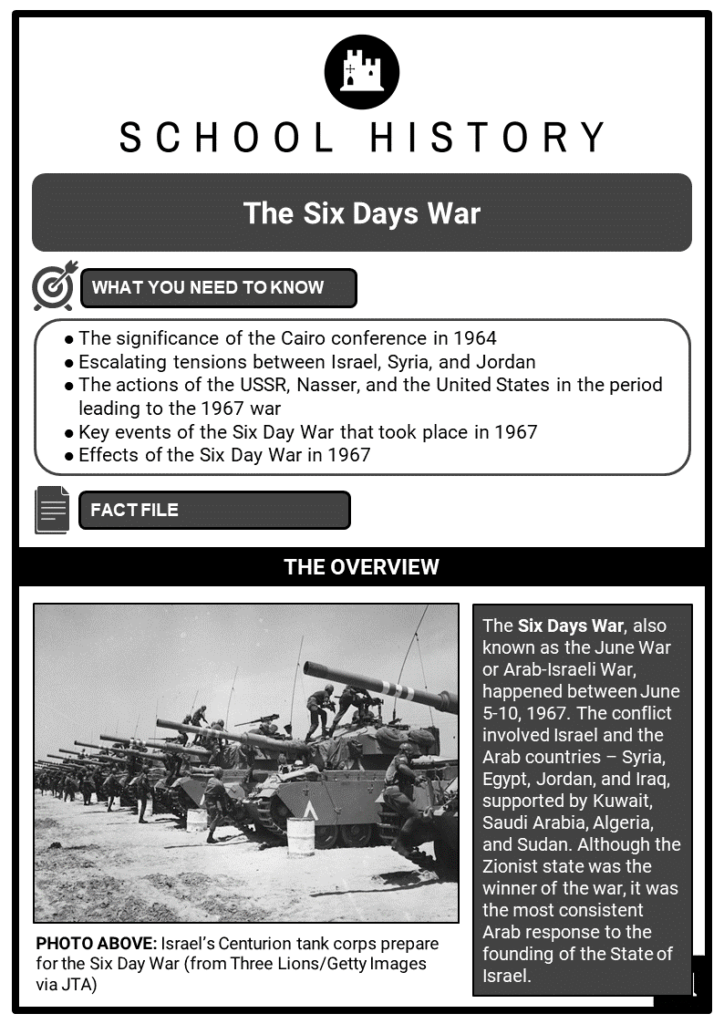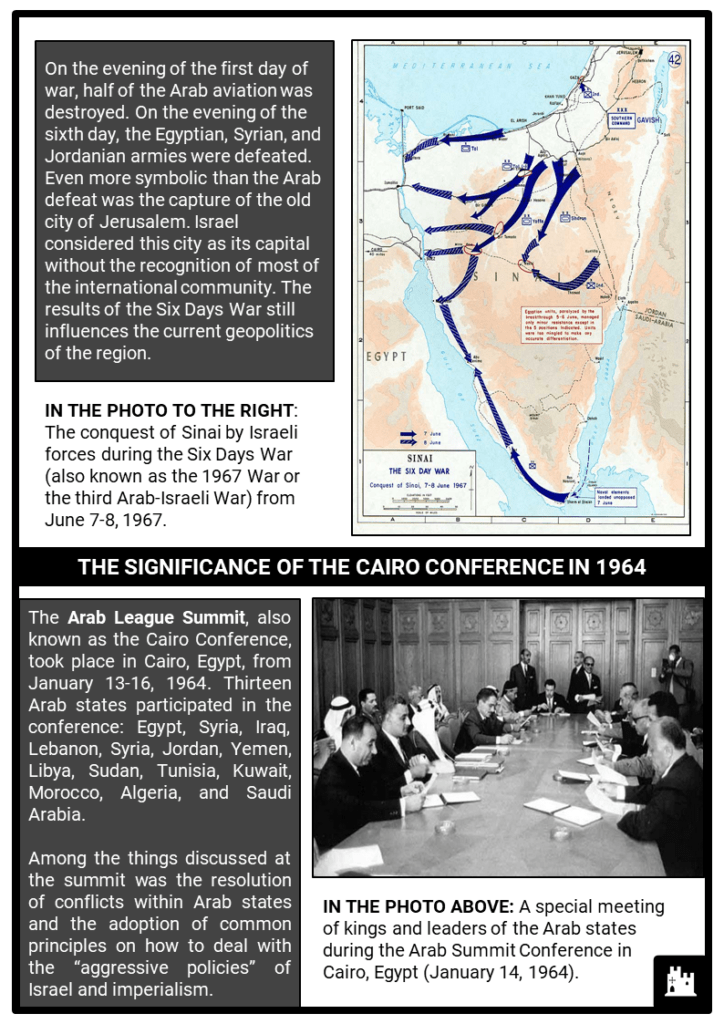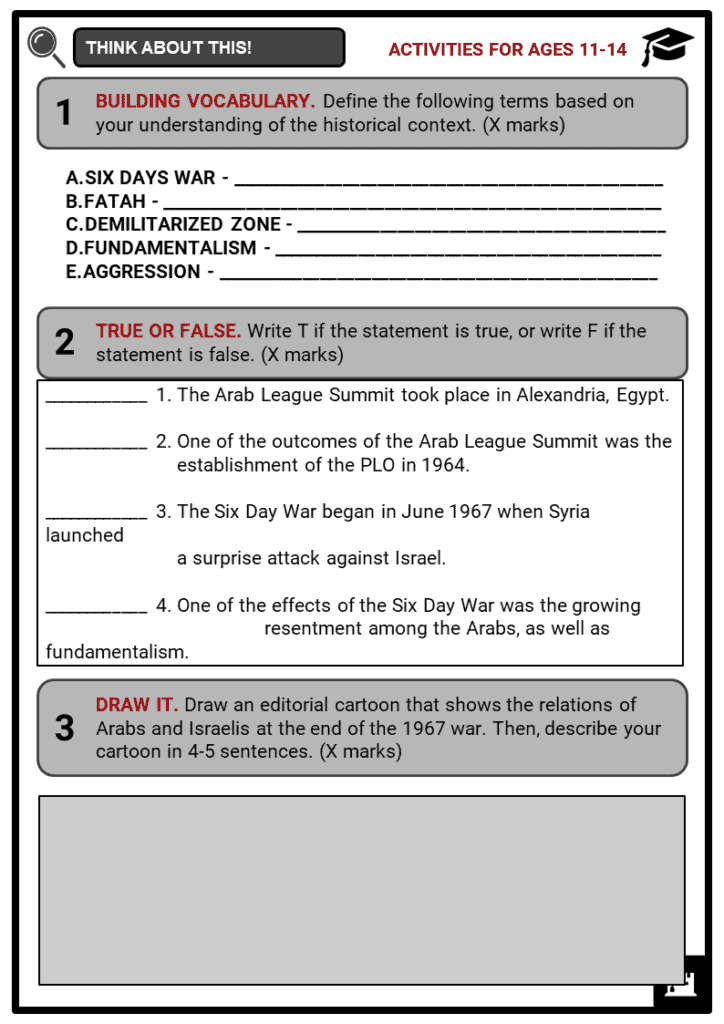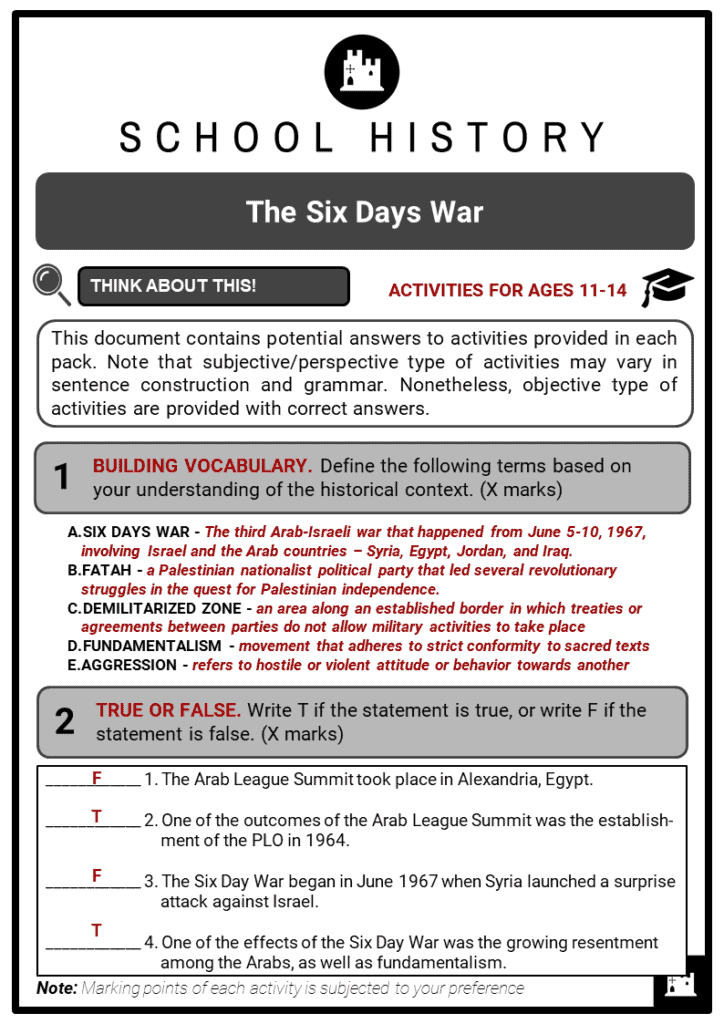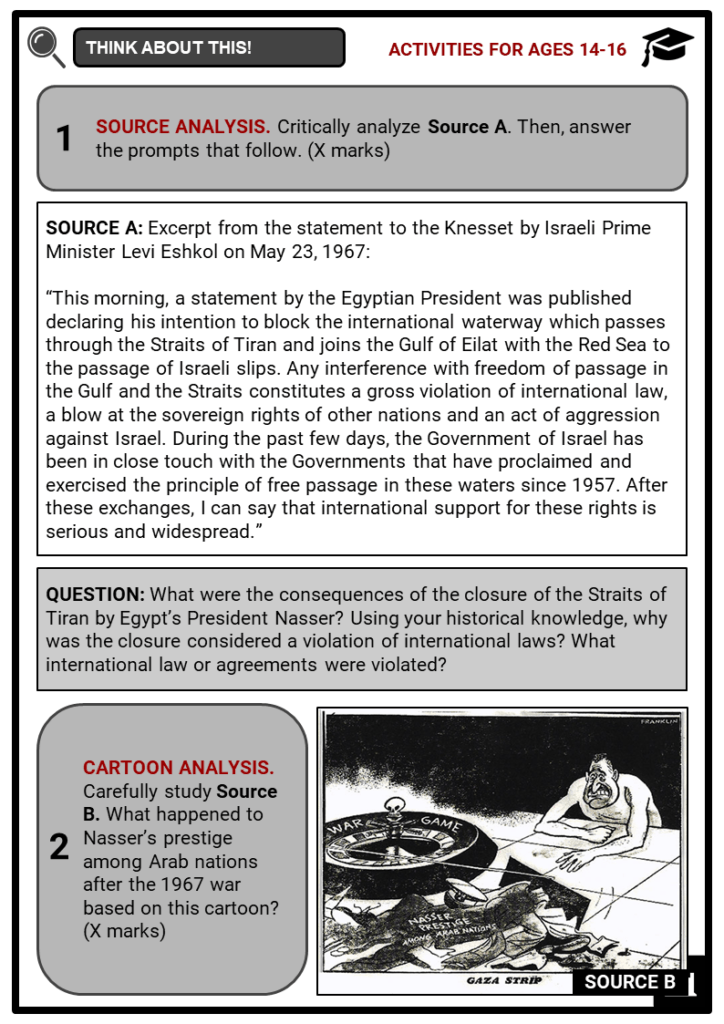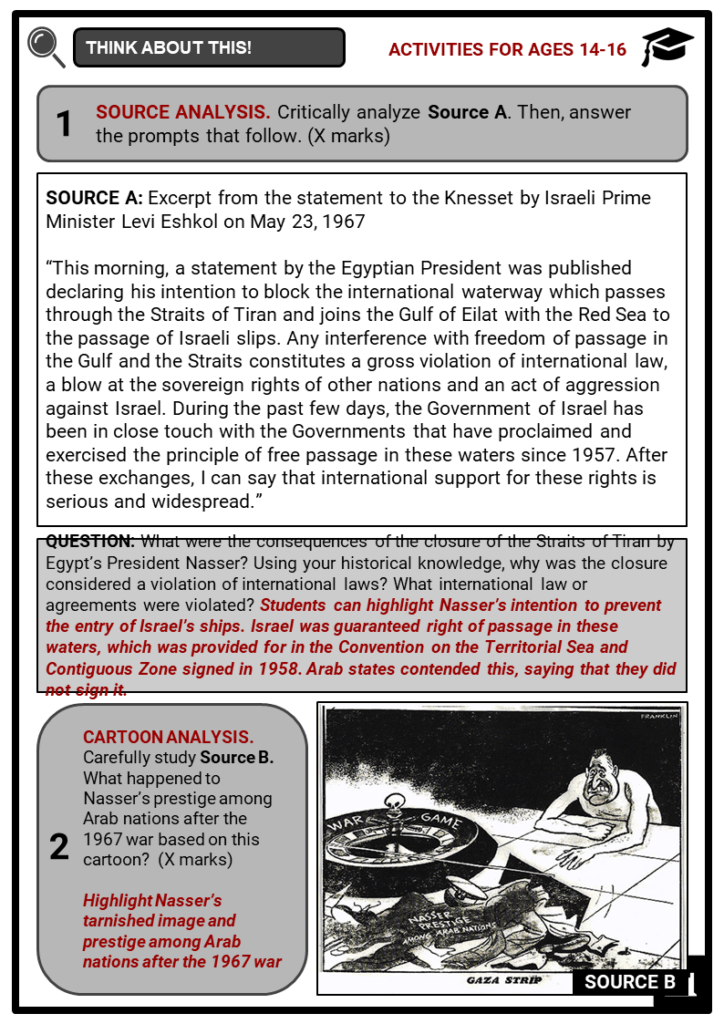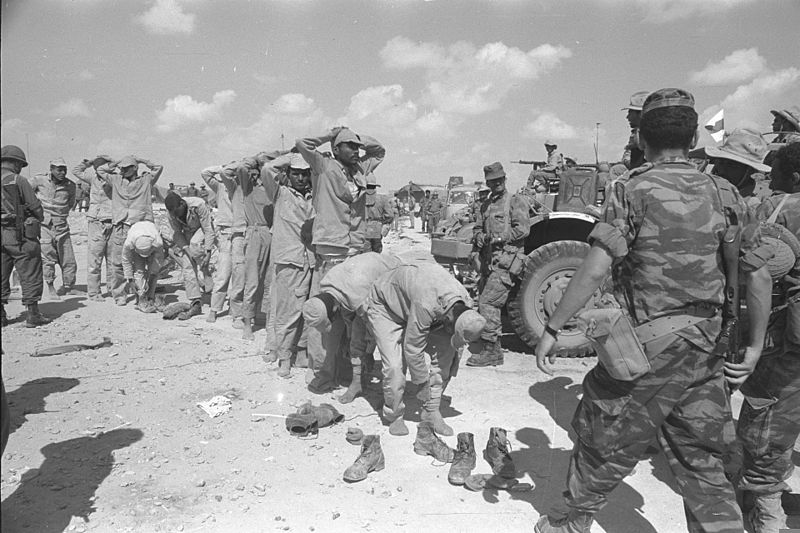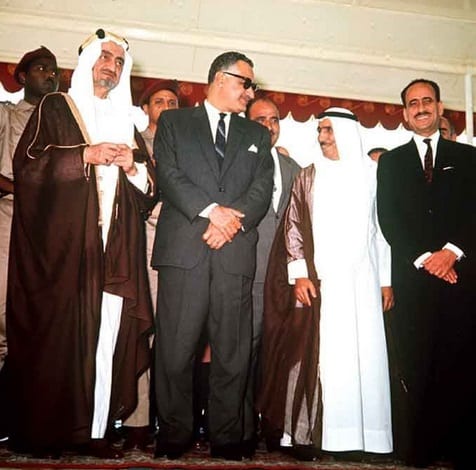Download The Six Days War Worksheets
Do you want to save dozens of hours in time? Get your evenings and weekends back? Be able to teach The Six Days War to your students?
Our worksheet bundle includes a fact file and printable worksheets and student activities. Perfect for both the classroom and homeschooling!
Table of Contents
Add a header to begin generating the table of contents
Summary
- The significance of the Cairo conference in 1964
- Escalating tensions between Israel, Syria, and Jordan
- The actions of the USSR, Nasser, and the United States in the period leading to the 1967 war
- Key events of the Six Day War that took place in 1967
- Effects of the Six Day War in 1967
Key Facts And Information
The Overview
- The Six Days War, also known as the June War or Arab-Israeli War, happened between June 5-10, 1967. The conflict involved Israel and the Arab countries – Syria, Egypt, Jordan, and Iraq, supported by Kuwait, Saudi Arabia, Algeria, and Sudan. Although the Zionist state was the winner of the war, it was the most consistent Arab response to the founding of the State of Israel.
- On the evening of the first day of war, half of the Arab aviation was destroyed. On the evening of the sixth day, the Egyptian, Syrian, and Jordanian armies were defeated. Even more symbolic than the Arab defeat was the capture of the old city of Jerusalem. Israel considered this city as its capital without the recognition of most of the international community. The results of the Six Days War still influences the current geopolitics of the region.
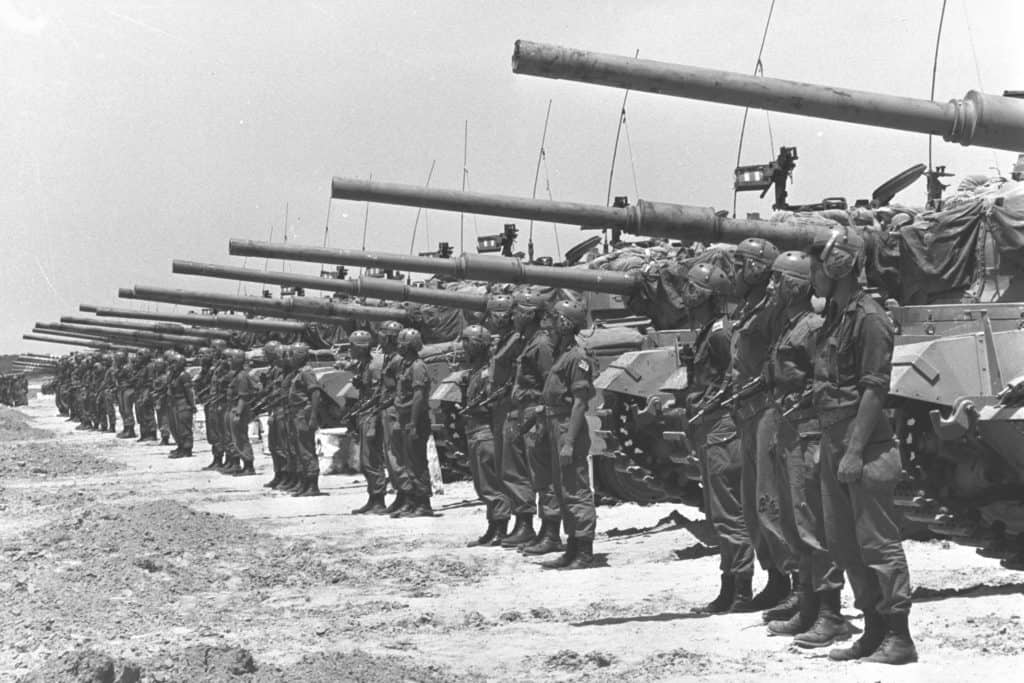
The Significance Of The Cairo Conference In 1964
- The Arab League Summit, also known as the Cairo Conference, took place in Cairo, Egypt, from January 13-16, 1964. Thirteen Arab states participated in the conference: Egypt, Syria, Iraq, Lebanon, Syria, Jordan, Yemen, Libya, Sudan, Tunisia, Kuwait, Morocco, Algeria, and Saudi Arabia.
- Among the things discussed at the summit was the resolution of conflicts within Arab states and the adoption of common principles on how to deal with the “aggressive policies” of Israel and imperialism.
- Syria accused Egypt of being reluctant towards military aggression against Israel. In response, Egypt President Gamal Abdel Nasser crafted the Headwater Diversion Plan, which aimed to divert two sources of the Jordan River to prevent Israel from using the water for their National Water Carrier project.
- Resolutions during the Cairo Conference (Arab League Summit)
- The Arab League had given Palestinian diplomat Ahmad al-Shukairi a mandate to negotiate the establishment of a Palestinian entity, which would be known as the Palestinian Liberation Organization (PLO).
- Member states of the Arab League agreed to establish a unified military command, known as the United Arab Command, led by Ali Ali Amer, Egypt’s lieutenant general. Its headquarters would be in Cairo.
- All Arab League member states had to unanimously approve Nasser’s water diversion plan. He also declared that there would be no military aggression and provocation of Israel.
Escalating Tensions Between Israel, Syria, And Jordan
- Syria’s support for Fatah - The PLO was established in 1964 by virtue of the resolutions passed by the Arab League during the first summit in Cairo. The sudden emergence of this Palestinian entity was met with great opposition by one of the Palestinian nationalist groups, known as Fatah. Led by Yasser Arafat, the group was previously involved in revolutionary struggles for independence of the Palestine region.
- Fatah responded to the PLO formation by asserting their military aggression against Israel and launching terrorist attacks in the country. Syria’s ongoing conflicts with Israel led them to express their support and endorsement of Fatah. In January 1965, they conducted several terrorist operations against Israeli forces in Jordan, Gaza (occupied by Egypt at that time), and Lebanon, with the backing of Syria.
- Israel’s Raid in Samu
- CAUSES
- Fatah’s military aggression against Israeli forces resulted from PLO’s formation.
- Terrorist raids of Fatah supported by Syria in Lebanon, Gaza, and Jordan
- KEY EVENTS
- November 16, 1966: Israel attacked the West Bank border village of Samu, destroying villagers’ houses.
- Armed forces from Jordan tried to fire back, but they were immediately stopped by the superior firepower of Israel’s forces.
- Riots ensued in major cities in Jordan as heard through radio broadcasts in Egypt, Syria and Iraq.
- Events of April 7, 1967
- Both Israel and Syria launched attacks on one another as a result of the latter’s military aggression against the former.
- Unarmored Israeli tractors were attacked in the demilitarized zone. Israelis fired back and engaged in air attacks using 130 planes.
- Israeli Mirage fighter jets were able to gain control by attacking six Syrian MIG jets that were cruising over Damascus, Syria.
The Actions Of The Ussr, Nasser, And The Us Leading To The War
- THE USSR
- The Union of Soviet Socialist Republics had been taking interest in the Arab-Israeli conflict since 1955, when it started to provide military equipment to Egypt. In May 1967, the USSR provided false intelligence to the Arabs that Israel had begun to mobilize forces on Syria’s border.
- EGYPT’S NASSER
- For President Nasser’s part, after receiving the intelligence from the USSR, he acted swiftly by ordering the withdrawal of UN forces from Sinai on May 16 and the closure of the Straits of Tiran on May 22. The withdrawal caused the removal of the buffer provided by UN forces, which led to direct contact between Israel and Egypt.
- THE UNITED STATES
- For its part, the United States maintained its stance of not getting involved in any aggression in the Middle East and to pursue diplomatic solutions. President Eisenhower pressured Israel to withdraw its forces from Sharm el-Sheikh and promised to grant the right of passage to the Straits of Tiran. The US did not grant military aid to Israel despite its requests.
Key Events During The Six Day War (1967)
- JUNE 5, 1967:
- Israel launched a surprise attack, which eliminated the Egyptian air force in one blow.
- Syria, Jordan, and Iraq launched air strikes on Haifa, Netanya, and other Israeli targets.
- Jordanian and Iraqi air forces attacked Tel Aviv.
- JUNE 6, 1967:
- Syria began to strengthen its border with Israel, artillery fire soon began.
- Israel was able to capture the following: Gaza, Ras al Naqeeb, Jebel Libni, Northeast Jerusalem, Ammunition Hill, and Talpiot.
- Jordan’s military forces retreated from the West Bank.
- JUNE 7, 1967:
- A ceasefire was crafted by the UN Security Council and presented to Nasser, but he turned it down.
- Israel was able to gain control of Bir el Hassana and Al Kazima in Egypt.
- Jordan’s forces were ordered to retreat once again.
- Syria and Israel continued to wage war on the border of Golan.
- JUNE 8, 1967:
- A ceasefire was accepted by Egypt.
- Israeli forces were able to capture Hebron.
- On the border of Golan, fighting continued between Israel and Syria.
- JUNE 9, 1967:
- There was an order to attack Golan Heights.
- Israel gained control of Golan Heights from Syria.
- Nasser resigned as Egyptian President. He announced it through television and radio broadcasts. However, the legislators did not accept his resignation.
- JUNE 10, 1967:
- The war ended as Syria and Israel agreed to a ceasefire initiated by the United Nations.
- Golan Heights was taken by Israel, as well as the town of Quneitra in Syria.
- Israel gained control of the Gaza Strip, the West Bank, and the Sinai Peninsula leading to the Suez Canal.
Effects Of The 1967 Six Day War
- Israel became the strongest military power in the Middle East region. It also found itself an ally in the United States, who was not in favor of military aggression in the region in the early years of the Arab-Israeli conflict.
- Egypt suffered huge losses, with 15,000 troops killed during the war. It was seen as a humiliation and prompted Nasser to attempt to resign.
- Among the Arab states, the war in 1967 created humiliation and domestic discontent, as citizens criticized their weak leaders. Fundamentalism among Palestinian and Muslims grew.
- The Six Day War in 1967 displaced Palestinian Arabs in the region. The population of refugees continued to increase. Resentment emerged among the Arabs over their loss against Israel, and fundamentalism emerged.
- The Soviet Union’s prestige was called into question amidst the ongoing Cold War with the West, since their allies started to be defeated in wars.
- The United Nations (UN) served as a peace negotiator at the height of the Arab-Israeli conflict, which would later conclude with a landmark resolution in November 1967.
Image sources:
[3.] https://upload.wikimedia.org/wikipedia/commons/a/a1/Khartoum_Arab_Summit%2C_1967.jpg

